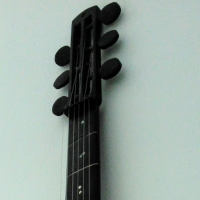DjangoBooks.com
Welcome to our Community!
Categories
- 20K All Categories
- 1.1K General
- 476 Welcome
- 59 Archtop Eddy's Corner
- 146 CD, DVD, and Concert Reviews
- 385 FAQ
- 26 Gypsy Jazz Italia
- 27 Photos
- 202 Gypsy Picking
- 21 Unaccompanied Django
- 15 Pearl Django Play-Along Vol.1
- 17 Gypsy Fire
- 45 Gypsy Rhythm
- 1.4K Gypsy Jazz University - Get Educated
- 130 Gypsy Jazz 101
- 227 Repertoire
- 218 History
- 708 Technique
- 51 Licks and Patterns
- 6 Daniel Givone Manouche Guitare Method Users Group
- 20 Eddie Lang Club
- 1.3K Gypsy Jazz Gear
- 802 Guitars, Strings, Picks, Amps, Pickups and Other Accessories
- 459 Classifieds
- 49 Recording
- 62 Other Instruments
- 18 Violin
- 5 Mandolin
- 22 Accordion
- 7 Bass
- 10 Woodwinds
- 347 Gypsy Jazz Events
- 143 North America
- 109 Europe
- 95 International
In this Discussion
Who's Online (0)
Django's guitar setup
 Buco
NOVA, DCDeity Ivanovski maple/spruce
Buco
NOVA, DCDeity Ivanovski maple/spruce
I was wondering what type of the the setup Django preferred?
I know in general his guitars had a higher action.
When I listen to his recordings I never hear any fret buzz.
Is that the result of his setup or the mics of the day covered up a lot of the artifacts like a fret buzz?
On the contrary, when I listen to most of the greats of today there's fret buzz. With some it's less and some have more. Stochelo is one who's sound is usually clean but recently there was a thread where his tone was a little criticized and the person said perhaps because of low action. I don't know but I'm thinking now maybe that wasn't his personal instrument?
Sometimes when I listen to the greats of today I wish they'd setup their guitars so it goes away and trade a few 16th and 32nd notes for a cleaner sound.
Buco
I know in general his guitars had a higher action.
When I listen to his recordings I never hear any fret buzz.
Is that the result of his setup or the mics of the day covered up a lot of the artifacts like a fret buzz?
On the contrary, when I listen to most of the greats of today there's fret buzz. With some it's less and some have more. Stochelo is one who's sound is usually clean but recently there was a thread where his tone was a little criticized and the person said perhaps because of low action. I don't know but I'm thinking now maybe that wasn't his personal instrument?
Sometimes when I listen to the greats of today I wish they'd setup their guitars so it goes away and trade a few 16th and 32nd notes for a cleaner sound.
Buco
Every note wants to go somewhere-Kurt Rosenwinkel












Comments
when I first got it, the guitar buzzed somewhere around the 7th fret (d-string) , but after sanding the buzz shifted to around the 14th fret (low E) and sometimes open D. I have no idea what happened, but I'm planning to have it set up by a proper luthier.
Most of mine included.
If you set your guitar with a low action the potential for movement of the top or neck can result in even a lower action which will leave you sounding like a box of buzzing bees.
I have tracks I recorded with the same guitar on different days that sound like a different guitar due to wood movement and fret wear, I can actually wear standard wire quickly.. which can be annoying .
I like to shoot for 2.3 to 3.2 mm which is low, but possible with out problems if the work is precise enough.
The precision takes time so I like to fret with hard wire so the set up lasts for a while.
Django must have had some strong hands.
Mark Whitfield the jazz guitarist once came into a shop I was working in with an L5 that had the highest action I have ever seen. Must have been 5-6mm on the low E at least. He was in to repair the pick guard bracket ! The action was fine , I asked him,"Mark are you really going to play it like this?" He said,"yup."
He had started out as a string bass player. That guitar was no big deal for him. He could play tempos and swing like mad. Real clean too.
But it became too much of a bear on my hands after a while but even more I felt like I'm putting up with something I didn't choose. After some neck treatments now it's at little over 3mm at the high e and that I feel is a pretty good compromise.
In good humidity it's very clear but dry weather makes metalic sounding artifacts especially on the high e. It was a real struggle this winter in Chicago when the heat was cranked up all the way all the time and you couldn't open the windows for more than a few minutes to let some fresh air inside.
With this music and the kind of powerful picking it requires it's really not easy to have it both ways, low comfortable action and clear notes when strings are picked hard.
I never spent a lot of time with top shelf guitars and when I played them briefly I wasn't paying attention to those kind of details but are some out there that have it both ways?
By the way what happened to Bob Holo's reply? I glanced at my phone while at the job site today and saw a post from him and was looking forward to reading it too.
Franz, don't sweat your issues, it's a PITA but a good setup will take care of that. I know from my own experience. And you can't blame the luthier who built the instrument either, sometimes the wood just does what it wants to do and it needs to go through a few seasons and settle in.
Al, I listen to Mark Whitfield and actually enjoy his tone a lot but had no clue he prefers high action. He is an incredible player.
Finally Craig, does this tell us another thing about Django, that he preferred music that came out of his instruments over his ability to play more notes with a lower action?
Or am I being too romantic, maybe it was simply a pragmatic thing, without amplification available in his early years he needed every ounce of volume out of his instrument?
I wrote it while waiting on hold for an appliance delivery appointment - bad muzac and advertisements playing in my ear while I typed. I went back and read it later and thought it was poorly written - so I deleted it. 5 dishwasher repairs in two years. Ugg. I decided to just replace it and so in a week or so, a brand new Miele that costs more than my first car will arrive. I should have just bucked up and bought it in the first place. Never cheap-out on appliances.
Basically I was just saying that action and intonation are inter-related and the repertoire has expanded to include some very technical and some very harmonically complex music which make playability up the neck and intonation very important. Those old-fashioned setups tended to be "high & flat", which is to say that there was little relief and a ton of action. So, intonation and playability got progressively dicey as the player went up the neck. Modern setups allow players to comfortably go all over the neck. Really though, a good guitar doesn't need a terribly high setup. The three best Selmers I've played all had nice playable setups. Yes, sometimes guys get carried away - that's true. Some guys tend toward ultra-low setups and it's just a crime. You play their guitars and it's "plink plink plink"... I remember it seemed to be a bit of a fad in the early-mid 90's in America to buy a Favino and set it up like a fingerstyle guitar. You'd see a guy playing a great old guitar and not getting much volume out of it and then find out the action was 2mm over 1.2mm or something crazy like that. But on the other end, the 4mm+ action is completely unnecessary unless the guitar is overbuilt or the neck angle is so bad that a high action is required to get some downpressure on the soundboard. Good conservative setups tend to work best because they load the guitar properly, they intonate reasonably well, and they can take a little variability up or down from high or low humidity without the guitar becoming unplayably high or low - and really - you can get a lot of clean power out of a modestly setup guitar. But low humidity bites us all in the backside from time to time. If your guitar isn't playing cleanly and it sounds brittle and "zingy" and the grain in the soundboard looks more prominent than usual... it's time to humidify.
youtube.com/user/TheTeddyDupont
This winter I've been on the top of humidifying and putting it back in the case when not playing. One day as an experiment I left the guitar out of the case overnight and right away in the morning humidity was around 26-27% and the guitar was zingy. Few days back in the case with a humidifier and it went back to normal.
Oh man, Miele makes such awesome stuff. I got their vacuum after trying it out in a customer's home and it's the best sucker ever and stays quiet while doing it. Dyson has got nothing on this thing. Huh I became an appliance enthusiast all of a sudden, if my wife sees this she'll be like well how come you don't use it more often if you like it so much?
Would love to find a time machine and go back and find out though...